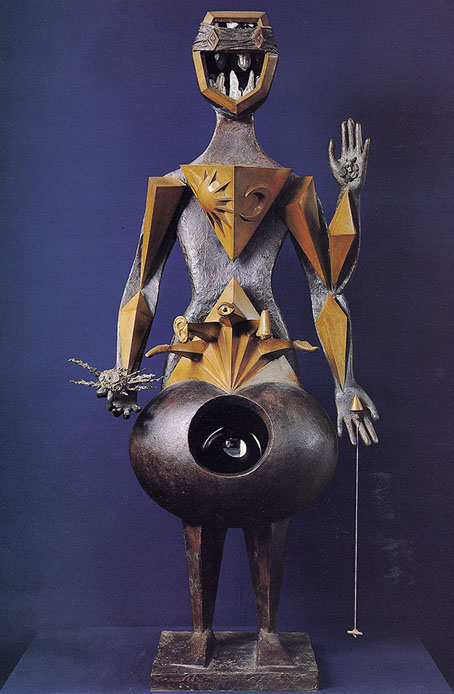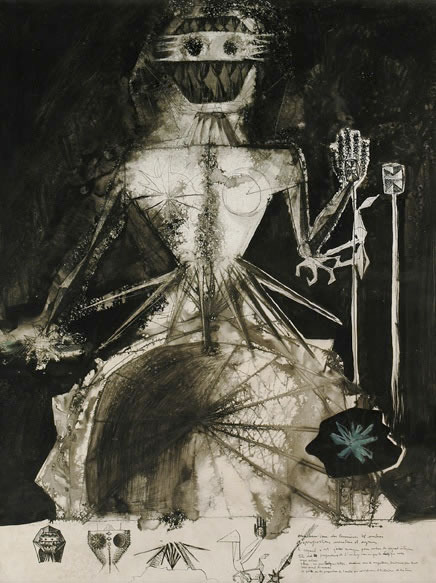
Le Grand Transparent (1947) by Jacques Hérold.
The Great Transparent Ones
Man is perhaps not the centre, the cynosure of the universe. One can go so far as to believe that there exist above him, on the animal scale, beings whose behaviour is as strange to him as his may be to the mayfly or the whale. Nothing necessarily stands in the way of these creatures’ being able to completely escape man’s sensory system of references through a camouflage of whatever sort one cares to imagine, though the possibility of such a camouflage is posited only by the theory of forms and the study of mimetic animals. There is no doubt that there is ample room for speculation here, even though this idea tends to place man in the same modest conditions of interpretation of his own universe as the child who is pleased to form his conception of an ant from its underside just after he has kicked over an anthill. In considering disturbances such as cyclones, in face of which man is powerless to be anything but a victim or a witness, or those such as war, notoriously inadequate versions of which are set forth, it would not be impossible, in the course of a vast work over which the most daring sort of induction should never cease to preside, to approximate the structure and the constitution of such hypothetical beings (which mysteriously reveal themselves to us when we are afraid and when we are conscious of the workings of chance) to the point where they become credible.
I think it necessary to point out that I am not departing appreciably from Novalis’ testimony: “In reality we live in an animal whose parasites we are. The constitution of this animal determines ours and vice versa,” and that I am only agreeing with a thought of William James’s: “Who knows whether, in nature, we do not occupy just as small a place alongside beings whose existence we do not suspect as our cats and dogs that live with us in our homes?” Even learned men do not all contradict this view of things: “Perhaps there circle round about us beings built on the same plan as we are, but different, men for example whose albumins are straight,” said Émile Duclaux, a former director of the Pasteur Institute (1840–1904).
A new myth? Must these things be convinced that they result from a mirage or must they be given a chance to show themselves?
André Breton, Prolegomena to a Third Surrealist Manifesto, or Not, 1942

Le Grand Transparent (1947) by Jacques Hérold.
Elsewhere on { feuilleton }
• The Surrealism archive
Previously on { feuilleton }
• The Execution of the Testament of the Marquis de Sade by Jean Benoît
• Chance encounters on the dissecting table
• The Marvellous
• Surrealist cartomancy
